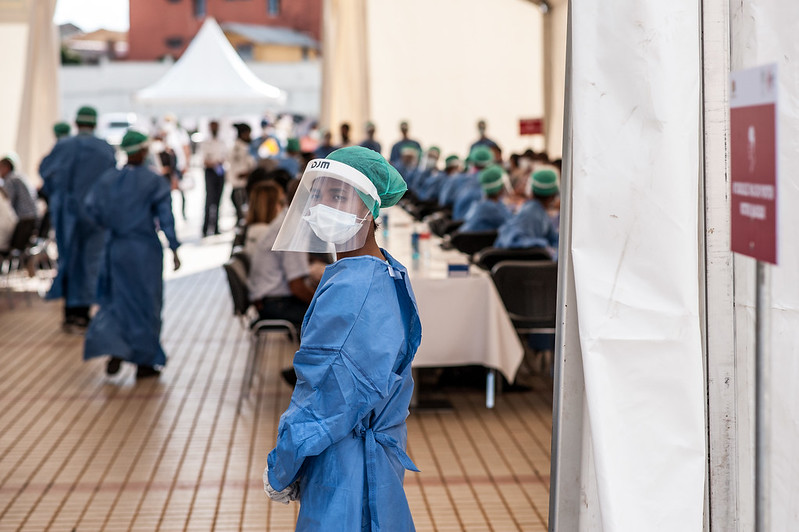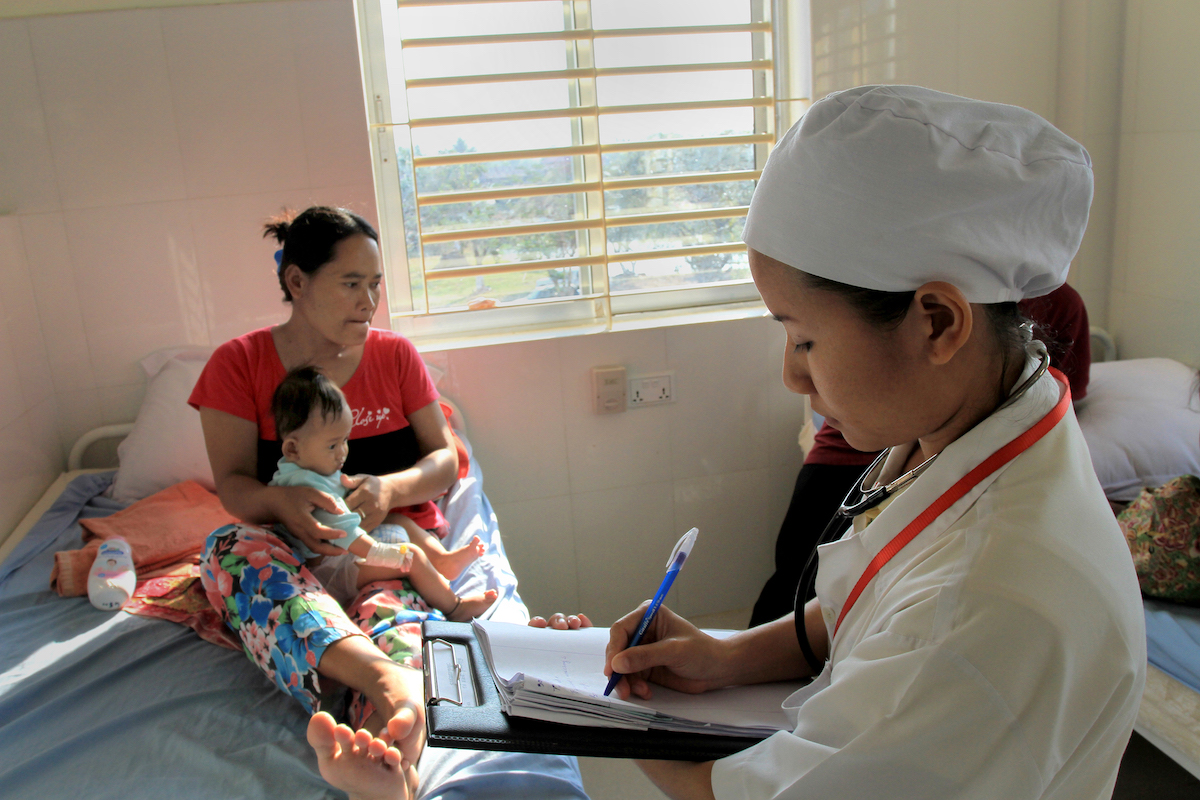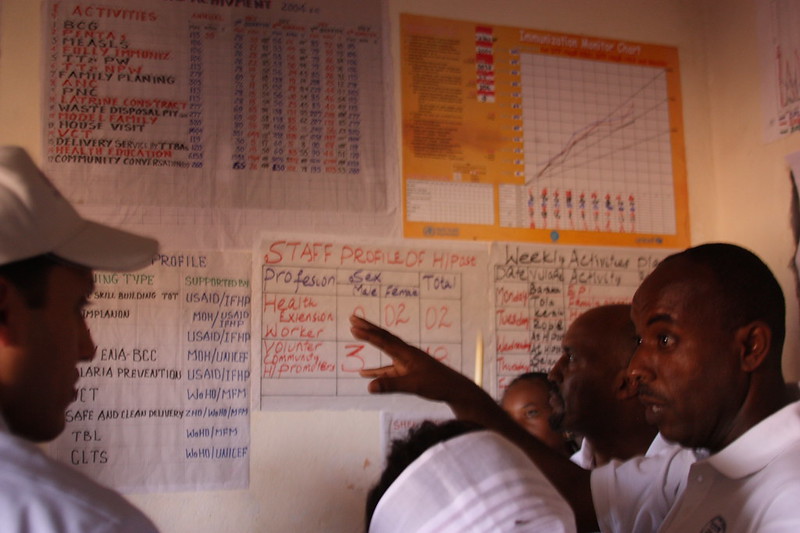Recommended

Blog Post

CGD NOTES
The full impacts of COVID-19 and the restrictions adopted to mitigate the pandemic are yet to be fully revealed. We do not know the number of deaths indirectly related to the novel coronavirus around the world, and how these may differ from country to country. How many people, for example, have died because they cannot get to a doctor owing to transportation shutdowns? How many patients are left without care as entire facilities are repurposed for COVID-19?
Lessons from past outbreaks—such as the 2015 West African Ebola crisis—show that without a concerted effort to protect them, essential health services will suffer during a pandemic response. However, recommendations for pandemic responses often come years after the pandemic has been contained, and very few modeling efforts provide real time forecasting. This means that we are missing a lot of important information that could inform the pandemic response as it is happening.
In a previous blog, we explained how we are building an online, frequently updated, open-access inventory of accounts of indirect health effects of COVID-19. The inventory is designed to support researchers across the world in their attempts to quantify these indirect health effects of COVID-19, and provide pragmatic approaches to minimise these effects, using timely and real-life examples. You can find the current inventory here. In addition to this open access inventory, we will be posting regular updates to broadcast some of the key published findings of the secondary health effects of COVID-19 from our inventory. We have coded our inventory across different disease and treatment areas and our presented findings will be grouped into these same categories, to be easily identifiable.
We would like to emphasise that this is a snapshot of a quickly evolving situation, rather than a comprehensive overview of the indirect impact of COVID-19 around the world. Our updates aim to give a horizontal view of some of the effects of COVID-19 globally, and across sectors, showing the complex and fast changing nature of the pandemic, including the important contextual factors of the response. We encourage you to stay tuned for more of some key indirect health effects of COVID-19 and to keep sharing resources with [email protected] for inclusion in the inventory.
Health areas
Communicable diseases
- Stop TB, a global tuberculosis advocacy organisation, completed a rapid assessment showing that the TB response is heavily impacted by the COVID-19 pandemic. Real time data shows that in India there has been approximately an 80 percent decline in daily TB notifications, the reporting diagnosed TB cases, during the lockdown period compared to the average daily notifications.
- Paul Adepoju, a science journalist, reports in The Lancet that in Nigeria the HIV and TB response is threatened by COVID-19. Health workers are reluctant to handle samples for tuberculosis testing because of similarities in the symptoms of tuberculosis and COVID-19—coughing, fever, and difficulty in breathing.
Immunisation
- World Vision, an international charity, have released a report showing that secondary impacts of COVID-19 threaten more children’s lives than the pandemic itself in 24 UN priority countries. World Vision applied evidence of reduced health service utilisation during the Ebola outbreak to forecast that 26 million children are at risk of infectious diseases due to a projected 30 percent reduction in Diphtheria-tetanus-pertussis (DTP3) immunisation coverage. Roughly five million additional children could suffer from malnutrition, and 100,000 additional children–an increase of 50 percent– from current levels, could die from malaria.
- The WHO have released global guidance to advise temporarily suspending mass vaccination campaigns in order to comply with the physical distancing measures put in place for COVID-19, while urging countries to monitor and re-evaluate at regular intervals.
Reproductive, maternal and child health
- In Uganda, Reuters reports that women are at risk from dying in labour, due to lockdown restrictions on transport. The bans to private transport have meant at least seven women in labour have died due to not being able to access a hospital. Uganda had recorded 98 cases of COVID-19 infections, and no deaths, at the time of writing.
- Chris Purdy, the president and CEO of DKT International, an international HIV prevention charity, writes about how COVID-19 will affect access to contraceptives due to slow down of shipping and delays of approvals, and the effect this will have in low- middle-income countries in particular. Purdy recommends that programs invest in inventory now to avoid stock-outs in the months ahead, and ensure they reduce uncertainty in buyers of contraceptives by offering promotions and discounts.
Non-communicable diseases
- A kidney doctor in India has crowdsourced a graphic on Twitter of all the dialysis centers that have stopped providing services due to COVID-19, showing up to 42 centres that have closed. These effects have been reported in The Times of India in Delhi, where 800 kidney patients have been “ousted” from hospital to make space for COVID-19 patients.
Various
International community
- Bill & Melinda Gates Foundation spoke to the Financial Times on their decision to entirely focus on COVID-19. Bill Gates said the foundation’s total attention and expertise now on COVID-19 and pandemics.
Policy responses
- Douglas, et al, reported in the BMJ on the magnitude of effects of social distancing strategies on health and inequalities, outlining those who will be most at risk. They warned that substantial mitigation methods are needed to protect those most vulnerable.
In good news...
- The Centre for Research on Energy and Clean Air has published a report showing there are likely to be 11,000 fewer air pollution related deaths as a result of the lockdown. This includes 6,000 fewer new cases of asthma in children, 1,900 avoided emergency room visits due to asthma attacks and 600 fewer preterm births.
Stay tuned for more information on our project, and please do get in touch via email, Twitter, or in the comments section of this post if you have any resources or news that you would like to see included in our inventory.
For more information on the indirect effects of COVID-19 across the wider health system, see here.
Disclaimer
CGD blog posts reflect the views of the authors, drawing on prior research and experience in their areas of expertise. CGD is a nonpartisan, independent organization and does not take institutional positions.
Image credit for social media/web: Riccardo Niels Mayer via Adobe Stock





